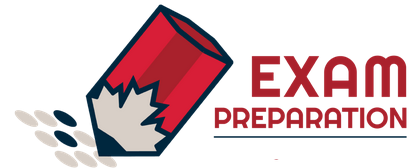Free Lesson Plan Templates & Formats for Canadian Students
Each class has its own lesson plan. It serves as a basic schedule and curriculum outline. With a lesson plan, you can track what you need to cover and what progress the class is making.
Each teacher now uses a hands-on method to create the lesson plan. Your task only gets easier with the college approved syllabus. With its help, you can keep better track of the curriculum.
Throughout their professional lives, beginning teachers often switch between different teaching strategies. A template might be confusing for beginners. In this situation, a pre-made curriculum template can be used. You can take a look at some templates that LiveWebTutors Canada Assignment Help specialists have selected.
You can choose between seven common lesson plan structures. These templates all have different timelines and lesson requirements. They are listed below.
1. All Lesson Plan
The universal lesson plan template is, as the name implies, very general. Canadian students in any course, program or organization can use this model. The format is extremely classic and suitable for all subjects.
Each universal template has five main components:
- Lesson timeline
- Materials and didactic resources
- Reading material and references
- Homework assignments
- Assessment
The semester objective is set in the first section, Lesson Objective. This allows you to clearly see what needs to be done at each step of the lesson plan. The activity planner then selects the way you will achieve these goals.
Next comes the instructional materials, including books, office supplies, and other items needed to complete the semester. The universal planner also notes supplemental reading used in each class.
For teachers, the homework grading service is a lifeline. This feature allows you to monitor assigned and turned in projects throughout the semester.
2. An example of a daily lesson plan
The scope of the daily lesson plan template is smaller. It is used to set academic obligations for a given day. The daily class schedule has a very organized and thorough framework.
You can assign individual parts to your lectures and classes throughout the day. In this style, you can also get a breakdown of the day by hour. This allows you to better manage and plan your time.
The daily lesson plan usually provides plenty of room for editing. You can change the content as you like without changing the basic structure.
3. Template for a weekly plan
The template for a weekly planner is a bit more useful and time-saving than the daily planner. The design is suitable for kindergarten classes, smaller groups and lower grades. The planner can be created on a variety of sheets.
Give each day of the week its own section or combine all seven days on one sheet. In other words, you can think of the weekly planner as a continuation of the daily lesson plan template.
The weekly planner gives students more control over the information provided. Add your own columns for assignments, tests, and assessments.
4. Example of a lesson plan
For advanced classes, the lesson plan template is perfect. Both teachers and students can streamline the curriculum by using a lesson plan. In addition, the design of the template can vary depending on the reader.
For students, the template can put more emphasis on the topics. Conversely, teachers can keep track of attendance, work submitted, and grades. The course schedule template summarises the entire course in a single layout that can be for a month or longer.
5. Lesson Plan Templates
Lesson plan templates list the subjects/units scheduled for the academic year. They provide an accurate summary of completed and unfinished lessons for each session. Students can use the Unit Syllabus to keep track of exams scheduled for the semester.
Begin the unit syllabus by listing all subjects covered in your programme of study. Each semester, the university provides a tentative syllabus. You can outline the specific parts you want to study or focus on in the class schedule.
In the next section, you indicate what reading and other materials you will need for class. For theoretical topics, books, journals, and charts work well. For practical scenarios, you will need special tools such as beakers, apparatuses, etc.
6. Online template for a lesson plan
Students seeking outside help with their courses often turn to online lesson plans. Although these online programmes are flexible, they require a lesson plan to keep things organised. The format of the online course is a bit different from the norm.
The online lesson plan template provides forms for specific classes, courses, and questions in one place to help you get started. You can use it as a long-term planner for an entire session. “Objectives,” “Courses,” “Important Questions,” “Reference Guides,” “Virtual Training,” and other components are typical of online lesson plans.
7. Excel lesson plan templates.
Students choose Adobe or Microsoft Word for their syllabus templates. Excel spreadsheets are useful for the quantitative components of the planner. It would be better to change the “Assessment” or “Attendance” tab to Excel.
Excel’s layout is predominantly numeric, which makes it difficult to implement detailed planning layouts. Excel can create lesson plans for a single day, an entire week, or an entire semester. Look online for pre-made Excel templates that you can use for inspiration.
8. Components of a sample lesson plan
Every lesson plan layout has a few basic components, regardless of size or scope. These elements allow the reader to see how the class works. They also give you an accurate estimate of the work remaining.
9. Dashboard
The lesson plan is displayed on the dashboard as a skeleton. The template is usually grid-like with multiple rows and columns. The information in each section is editable, movable, and reversible.
Include a bulleted list of each lesson’s highlights and a summary of the content. The grid-like structure makes your job easier by listing the most important points of the work for you.
10. A list of participants
One of the first parts of the lesson plan is often the attendance list. This follows a brief introduction in which you list the objectives of the lesson plan. You can use the attendance list to keep track of class size, progression, and vacations entered for the year.
The attendance list must include the names of all students, a date column, fields for holidays, etc. In some institutions, the attendance list also affects the end-of-year evaluation.
LiveWebTutors as the platform is well-known among students to get Essay Help in Canada.



